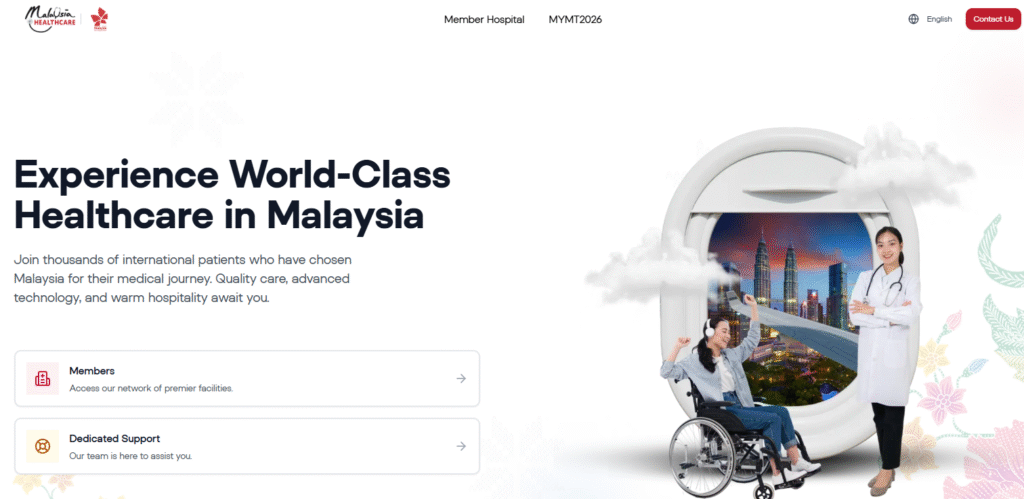Over the past decade, Malaysia has risen to become one of the most prominent destinations for healthcare travel in Asia. Much of this success can be attributed to the Malaysia Healthcare Travel Council (MHTC), a government agency established to facilitate, coordinate, and promote the country’s healthcare travel industry. This review article takes a closer look at MHTC’s role, achievements, and the challenges it faces as Malaysia seeks to maintain its competitive edge in global medical tourism.

Origins and Mandate
The Malaysia Healthcare Travel Council was established in 2009 under the Ministry of Health Malaysia. Its primary mandate is to position Malaysia as a leading global healthcare travel destination by providing a centralized platform to support international patients, healthcare providers, and industry stakeholders. Unlike traditional promotional boards, MHTC plays both a marketing and facilitative role, ensuring that patients’ journeys are seamless from the point of inquiry to post-treatment follow-up.
By consolidating efforts under a single body, Malaysia has been able to present a unified brand identity to international markets, something that has been critical in differentiating it from neighboring medical tourism hubs like Thailand, Singapore, and India.
Achievements and Global Recognition
One of MHTC’s most significant achievements has been its success in branding Malaysia as a “Healthcare Travel Destination of Choice”. The council has repeatedly received international recognition, including awards from the International Medical Travel Journal (IMTJ) for excellence in medical tourism.
In addition, Malaysia has consistently ranked among the top countries for healthcare travel, particularly for treatments such as cardiology, oncology, fertility, and orthopedic surgery. The affordability of care, coupled with internationally accredited hospitals and English-speaking healthcare professionals, has made the country attractive to patients from Indonesia, China, the Middle East, and increasingly, Western countries.
MHTC has also developed patient-centric initiatives such as the Malaysia Healthcare Concierge and Lounge (MCL), available at Kuala Lumpur International Airport. This service provides international patients with personalized assistance upon arrival, offering a level of hospitality that sets Malaysia apart from many other destinations.
Economic and Social Impact
The healthcare travel industry contributes significantly to Malaysia’s economy, generating billions in revenue and creating thousands of jobs. MHTC has played a central role in aligning healthcare travel with the national economic agenda, ensuring that the industry supports broader goals such as foreign investment and tourism diversification.
Beyond economics, MHTC has promoted healthcare travel as a means of strengthening Malaysia’s reputation for hospitality, cultural inclusivity, and world-class medical expertise. In doing so, it has positioned the country not just as a medical hub, but also as a destination where patients can enjoy recovery in a safe, welcoming environment.
Strategic Marketing and Partnerships
MHTC has excelled in building global awareness through targeted marketing campaigns, international roadshows, and collaborations with airlines, travel agencies, and insurance providers. By developing partnerships across multiple sectors, the council ensures that healthcare travel is integrated into Malaysia’s broader tourism strategy.
Digital transformation has also been a priority. MHTC has invested in online platforms to provide information, facilitate bookings, and manage patient inquiries. This focus on technology has become particularly important in a post-pandemic world, where digital engagement is a primary touchpoint for international patients.
Challenges and Areas for Improvement
Despite its successes, MHTC faces several challenges. One key issue is regional competition. Neighboring countries such as Thailand and Singapore continue to attract large numbers of international patients, often leveraging established reputations for specialized treatments. To remain competitive, Malaysia must further emphasize niche areas where it can excel, such as fertility and cardiac care.
Another challenge lies in balancing healthcare travel with local needs. While international patients bring in revenue, there is always the risk that prioritizing medical tourists could strain resources meant for domestic patients. Ensuring equitable access and maintaining high standards of care for locals is essential to preserving public trust.
Additionally, while Malaysia’s affordability is a major selling point, relying too heavily on cost competitiveness may not be sustainable in the long run. To maintain growth, MHTC must highlight not just affordability but also innovation, quality, and comprehensive patient care.
Response to the COVID-19 Pandemic
The pandemic posed unprecedented challenges for the global medical tourism industry, with travel restrictions halting international patient flows. MHTC responded by reinforcing digital outreach, maintaining engagement with potential patients, and preparing the sector for recovery once borders reopened.
Post-pandemic, MHTC has emphasized safe and seamless healthcare travel, promoting Malaysia as a trusted destination with robust safety protocols. This proactive approach has helped restore confidence among international patients and partners alike.
The Road Ahead
Looking forward, the Malaysia Healthcare Travel Council has the opportunity to expand Malaysia’s healthcare travel ecosystem by focusing on several strategic priorities:
- Strengthening Niche Specializations – Highlighting centers of excellence in fertility, oncology, cardiology, and wellness tourism.
- Enhancing Digital Capabilities – Expanding telemedicine, virtual consultations, and digital concierge services to better serve patients before and after travel.
- Sustainability and Inclusivity – Ensuring that healthcare travel growth benefits both the economy and the local population.
- Global Branding – Positioning Malaysia not just as affordable, but as innovative, safe, and patient-centric.
Conclusion
The Malaysia Healthcare Travel Council has been instrumental in transforming Malaysia into a leading player in global healthcare travel. Through strategic branding, patient-centric initiatives, and cross-sector collaboration, it has built a strong foundation for sustainable growth.
However, as competition intensifies and patient expectations evolve, MHTC must continue to innovate, emphasize quality alongside affordability, and balance the needs of international and local patients. If it succeeds, Malaysia’s reputation as a premier healthcare travel destination will only strengthen in the years to come.

